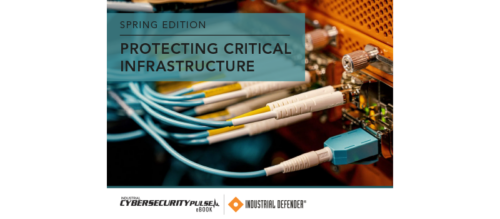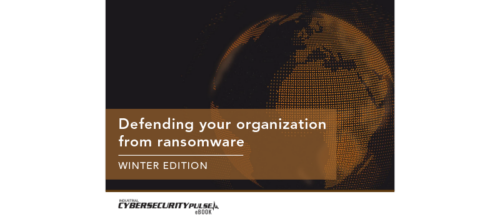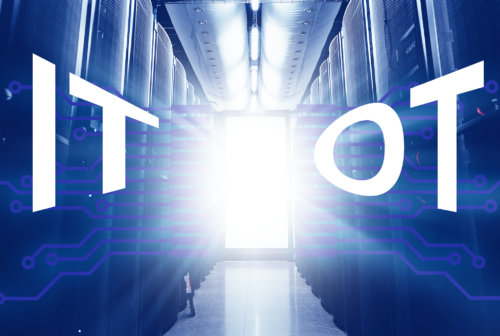‘The new age of disruptive innovation’
IIoT experts say emerging manufacturing models will change plant processes.
The Industrial Internet of Things (IIoT) has created a lot of buzz in the manufacturing space. For those who study manufacturing trends, it’s an exciting time, but it’s also a time where there’s a lot of confusion and misinformation. Plant Engineering spoke with two such experts: Karthik Sundaram, industry analyst for Frost & Sullivan’s industrial automation and process control business in Europe, and Greg Gorbach, vice president for ARC Advisory Group’s IIoT business:
PE: There are a lot of acronyms and terminology flying around right now, so let’s start with a couple of basics: What is different about IIoT? What makes this such a big issue for manufacturers?
Sundaram: IIoT refers to the advent of advanced connectivity within the industrial environment. It is significant for manufacturers because it can help them reinvent their processes starting from design, engineering, and production to services.
Gorbach: What’s different is that industrial companies are beginning to move beyond the computer-enhanced business models of the late 20th century. Many are embracing new models that take advantage of intelligent connected products coupled with potent software and analytics. With IIoT, we expect to see innovations in smarter products, new service and operating models, new production techniques, and new approaches to design and sourcing.
We also anticipate changes throughout the value network with new partners and new opportunities, along with new competitors and new threats. For companies with the right mindset, Internet of Things (IoT) platforms will open up big opportunities for improved asset performance, new service offerings, improved operational efficiency, and completely new ways of offering value to customers. It is an extremely dynamic and fast-moving space, with lots of conflicting messages and multiple technologies in the mix.
PE: What are the fundamental differences between IIoT and Industrie 4.0?
Gorbach: There are some differences between the two, but we have found that there are far more similarities. Whether you use the terms IIoT, Smart Manufacturing, Industrial Internet, Industrie 4.0, Digitization, or Connected Enterprise, these concepts are clearly moving past the hype stage to the point where real solutions are emerging backed by strongly associated business cases.The other thing we notice is that none of these terms is particularly good.
Sundaram: IIoT is a technological framework while Industrie 4.0 is an industrial framework. IIoT is an essential condition for Industrie 4.0.
PE: What’s the first thing a manufacturing manager should do when ready to adopt IIoT into the plant? And then, what’s the next step?
Gorbach: As I’ve tried to convey, IIoT isn’t like an app that you select and implement. So the first thing a manager needs to do is become educated about the complexities involved. It can be daunting, but it doesn’t have to be.
You can think about assembling a connection of technologies, such as bolt-on sensors, Wi-Fi networks, device-connectivity platforms, analytics tools, and software apps. Or you can look for high-level platforms that put much of the needed capability in place for you.Or you can seek out solutions (typically built on IIoT platforms) that deliver predictable benefits based on predefined inputs.
Sundaram: The manufacturing manager must align his workforce with the new technology environment. The second step must involve trying to expand and influence IIoT across his immediate supply chain.
PE: What are the looming challenges for IIoT? Some people suggest the capital costs will be hard for small manufacturers to absorb and others say we don’t have the skilled workers needed to fully implement IIoT. What do you see as the big issues?
Gorbach: Cyber-security threats are the biggest challenge, but many projects are moving forward despite this. Capital costs could potentially be a factor for small manufacturers, but that cuts both ways because IIoT also enables hybrid product-service models where instead of buying an asset outright, the output of that asset can be had as a service, shifting the upfront capital cost into a recurring operating cost. Also, many solutions take advantage of cloud-based, as-a-service structure, which can minimize costs.
Remote-monitoring services can spot problems in advance, using their experts. It’s also possible to leverage IIoT to take advantage of centralized experts, or widely distributed experts, reducing the need for local expertise.
Sundaram: The small and medium-sized enterprises (SMEs—or the Mittelstand, as the Germans call it) are reluctant to move into an IIoT environment because their key interests have more to do with return on investment (ROI) and less to do with technology. The IIoT argument from major suppliers is yet to gather traction, especially from an ROI standpoint.
PE: Once we get through all of the issues, what’s the real potential here? What kinds of financial and productivity gains can manufacturers expect to see from a fully operational IIoT system?
Sundaram: IIoT has the potential to disrupt supply chains, increase production efficiency, expand customization capabilities, and reduce lead times significantly. The gains from a quantitative standpoint will vary from one industry to another and will also depend on the level of investments an end user is willing to make. But at an overall level, a full-blown IIoT investment by a mid-size manufacturer can bring a minimum of a 30% increase in productivity and a 25% increase in financial gains, especially through optimized operating expense (OPEX).
Gorbach: The big picture is this: Industrial systems are about to undergo a significant and disruptive change. This will lead to innovations in business models and in the way companies compete. Existing plants and factories have, for the most part, fallen well behind the technology curve—but a number of them are starting to do something about it. At ARC, we are helping these companies assess where they are, determine where they need to be, and develop a technology strategy and roadmap to get there. It’s far different from the days when the technology plan was, "Let’s keep what we have for as long as we can." That mindset is really dangerous today, in the new age of disruptive innovation.
– See additional stories on the IIoT below.
Also, register now for CFE Media’s webcast series on the Industrial Internet of Things (IIoT), which focuses on design considerations, operations, and integration considerations, in three different webcasts. Click here to learn more.
For more cybersecurity coverage and information check out our sister site, Industrial Cybersecurity Pulse.





